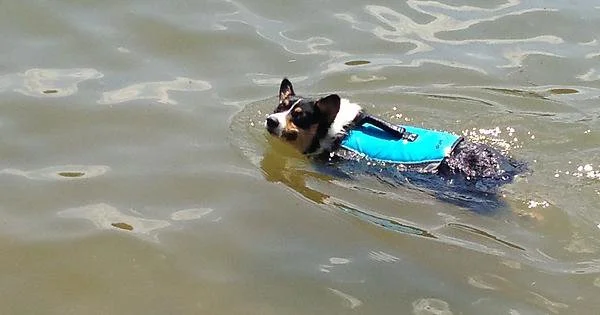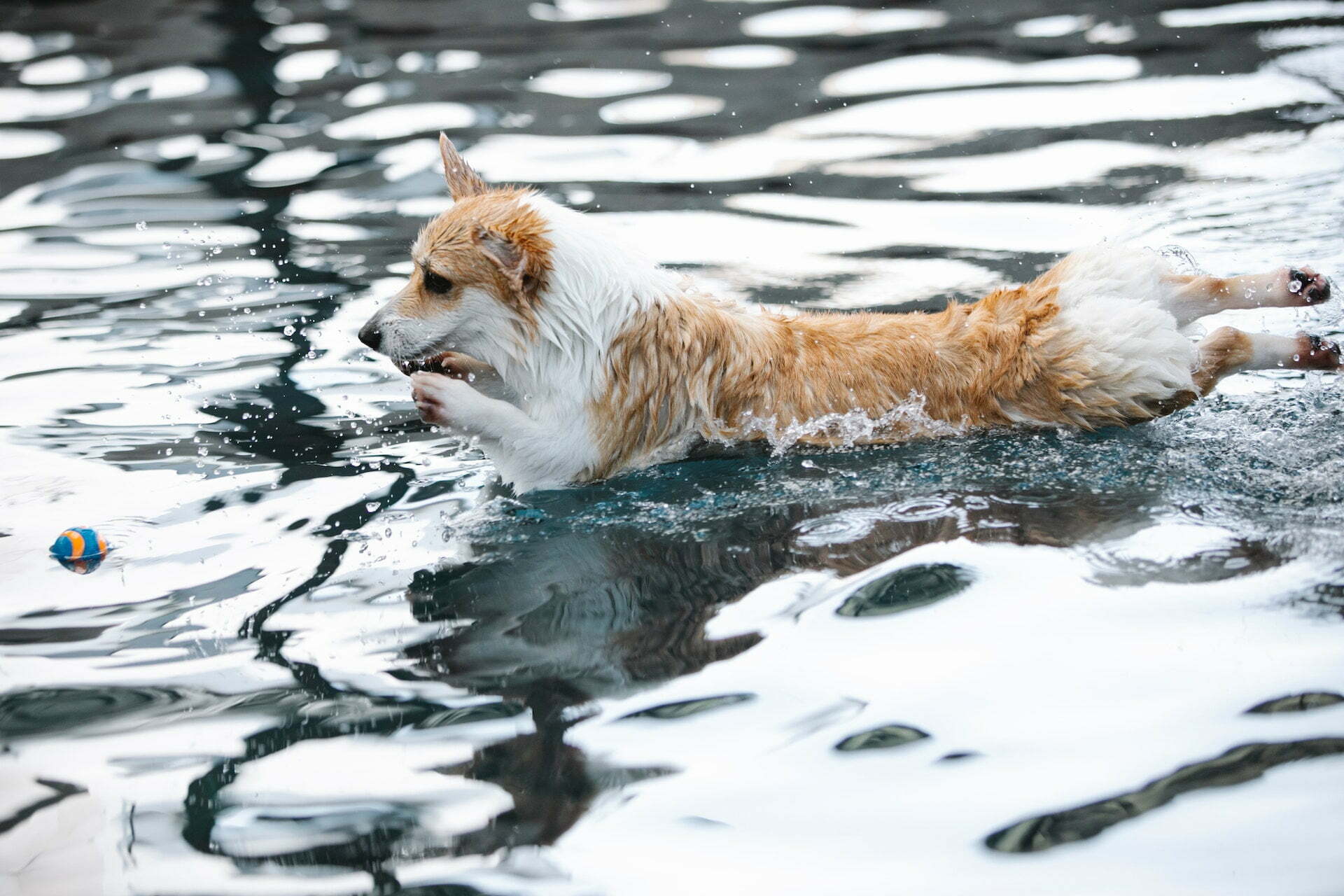Why do Corgi butts float? Have you ever been at the pool or beach and noticed a corgi paddling around with their adorable butt sticking out of the water like a little buoy? If so, you’re not alone. Corgi butts have a reputation for floating, and it’s not just because they’re cute (although that definitely doesn’t hurt) so if you asked yourself “Why Do Corgi Butts Float?” read ahead to find out.
Table of Contents
Why do corgi butts float? Body shape and fur mainly!
So, what’s the scientific explanation for why corgi butts float? For one, their body shape plays a big role. Corgis have a long, low-slung body with short legs, which creates a wide base and a low center of gravity. This body shape allows them to maintain balance and stability in the water, so they can swim and float with ease. This characteristic has likely evolved over time as a way for the breed to move efficiently through water while hunting or herding livestock.
Fur
The waterproof nature of a corgi’s coat is due to the presence of an outer layer of long, coarse hairs and an inner layer of short, soft hairs. The outer layer acts as a protective shield against the elements, while the inner layer helps to insulate the body and retain heat. This combination of hairs creates a coat that is both water-resistant and warm, which is essential for a breed that was originally developed for herding in the wet, cold climate of Wales.
In addition to providing insulation and protection from the elements, a corgi’s coat also helps to keep them afloat in water. When a Corgi enters the water, their coat becomes saturated with water, which increases the volume of their body and adds buoyancy. This effect is especially pronounced in corgis due to their thick, double coat, which creates a large volume of air pockets that can help to keep them afloat. Corgis have a lot of extra fur on their hind legs and rear which is why a Corgi butts floats in water!
By the way, if you’re wondering “Do Corgi’s Shed?” check out our post on that.
Legs
And let’s not forget about those powerful hind legs. Corgis have well-muscled hind ends, which help them paddle and swim through the water. Their short legs and wide base give them a lot of power and thrust, so they can swim with ease (and style).
Of course, corgis aren’t the only breed that can float in water. Pugs and bulldogs also have body shapes that allow them to float. But corgis are definitely known for their swimming and floating abilities, thanks to their unique body shape and fluffy coat.

In addition to their body shape and coat, corgis also have a strong swimming instinct, which helps them to stay afloat in water. Corgis are a herding breed, and they were originally developed to work in wet and muddy conditions, so they are well-suited for swimming and other water activities. Their strong hind legs and wide base give them a lot of power and thrust, which helps them to swim with ease and grace.
Precautions
While it may be amusing to watch a corgi’s butt float in the water, it is important to remember that all dogs, including corgis, should be trained to swim and be supervised while in the water. It is also important to consider the breed’s specific needs and limitations when it comes to water activities. For example, corgis may be prone to hip dysplasia and other joint issues, so it is important to ensure that they are not over-exercised in the water.
In addition to training and supervision, it is also important to provide your corgi with the proper gear for water activities. This may include a life jacket, flotation device, or other safety equipment. This will help to keep your corgi safe and comfortable while they are in the water.
Summary
So, why do corgi butts float? The next time you see a corgi floating around in the water with their butt sticking out, just remember: it’s not just because they’re cute (although, let’s be real, that’s definitely a bonus). It’s also because of their body shape, coat, and powerful hind legs. And as always, it’s important to train your dog to swim and supervise them while they’re in the water. Happy floating!



